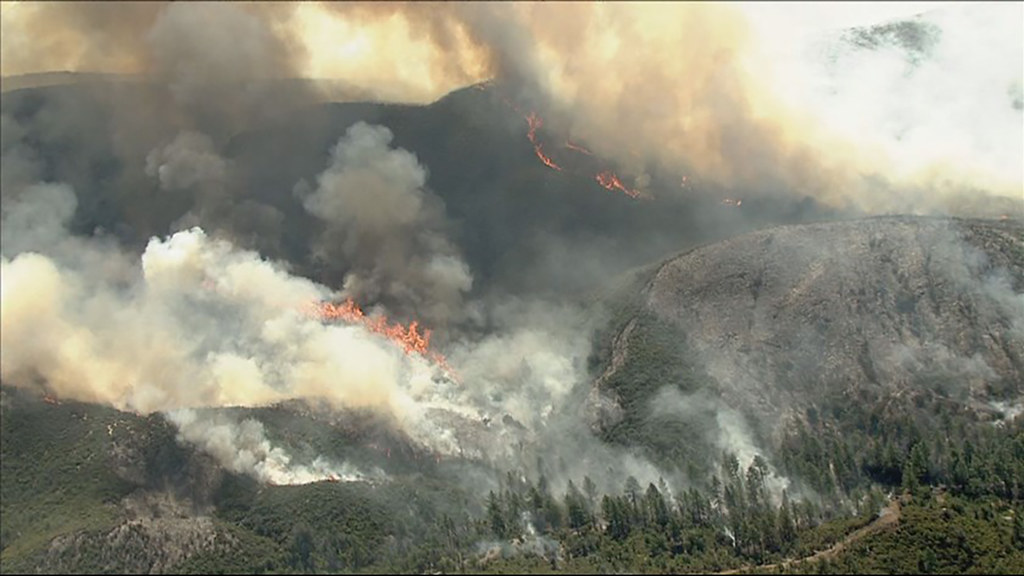This article was originally published in U.S. News & World Report.
Nearly the entire western United States is experiencing moderate to extreme drought, conditions that will or already have resulted in steep cuts to water availability, degraded habitats for fish and other wildlife, and significant economic losses. Drought also means this wildfire season—and those to come—will likely be even worse than recent record-setting seasons. Fortunately, states, tribes and the private sector are stepping up to restore America’s forests and reduce wildfire risks. And sensible policy reforms could empower them to go even further.
According to the Forest Service, about 63 million acres of national forests face high or very high risk of wildfires. For perspective, this is nearly a third of the entire area managed by the agency. Another 54 million acres managed by the Department of the Interior face similar risks. Together, these risks cover an area of federal land larger than the state of California.
Whether a wildfire will be catastrophic is determined, essentially, by the amount of available fuel and how dry that fuel is when a fire ignites. Drought makes both of these factors worse, by weakening and killing trees so that they become fuel for later fires, and by drying out the fuels that are already present in America’s forests.
Many factors contributed to these risks. Past Forest Service management decisions, including a misguided effort to remove fire from fire-adapted forests, resulted in dangerous levels of dead trees, brush and other fuels building up. Past droughts and a changing climate added more fuels and dried out existing fuels.
As a consequence, wildfires have burned progressively larger areas, destroyed more homes and other structures, and caused more environmental degradation by releasing smoke, damaging wildlife habitat and eroding water quality. In the 1980s, an average of 2.9 million acres burned per year. In the early 2000s, this increased to 6.5 million acres. And the annual total has eclipsed 10 million acres three times since 2015, including last year.
These fires are not limited to remote areas. Nearly 100,000 structures have been destroyed by wildfire since 2005, with roughly two-thirds of that damage occurring in the last four years.
Active forest restoration, including prescribed burns and the removal of excess fuels, can reduce these risks and protect communities. Because healthy national forests provide a lot of benefits – including clean air and water, recreational opportunities and economic opportunities – states, tribes, businesses and conservation groups have incentives to help restore America’s forests. And many already do.
The Northern Arizona Forest Fund, for instance, has brought together state and local agencies, tribes, water companies, outdoor recreation companies and conservation groups to reduce wildfire risks and promote healthier forests. Since 2015, this collaboration has raised more than $6.2 million for forest restoration, allowing it to reduce fuels on 13,600 acres in three national forests, plant 90,000 trees, improve 2,600 acres of wetlands and reduce erosion along 170 miles of roads and trails. For participants in the fund, the calculus is simple: It’s better to pay for forest restoration today than suffer the consequences of wildfire tomorrow.
In California, Blue Forest Restoration and the World Resources Institute have pioneered the forest resilience bond, an investment vehicle to fund restoration. For the first bond, a project to restore nearly 15,000 acres of the Tahoe National Forest, the state of California and a local utility company signed on to repay investors in the $4 million bond as restoration objectives are achieved. According to the Forest Service, the bond allowed the work to be done several years faster than if it had relied on agency funding.
In Idaho, the state has taken advantage of the Forest Service’s Good Neighbor Authority, which allows states, tribes and counties to help manage federal forests in exchange for a share of timber revenues or direct federal compensation. Between 2016 and 2020, Idaho used this authority to develop fuel reduction projects for more than 17,000 acres, perform prescribed burns, and plant drought-, disease- and insect-tolerant species of trees. Revenue from these projects will allow Idaho to fund additional Good Neighbor projects.
“Fix America’s Forests,” a report by the Property and Environment Research Center, identifies reforms that could address regulatory obstacles keeping more states, tribes and private groups from helping to tackle the forest restoration backlog. Appropriations rules, for instance, unnecessarily limit the Forest Service’s ability to partner with outside groups on ambitious restoration projects. Restrictions on the Forest Service’s Good Neighbor authority arbitrarily exclude tribes and counties from many of the program’s benefits. And bureaucracy and litigation can delay forest restoration and make private investment in restoration riskier.
Reforms to address climate, forest management and other factors that increase wildfire risk will be necessary in the long term to make sure the wildfire crisis does not recur. But, in the meantime, sensible reforms could unleash the public and private sectors to restore forests and protect communities from wildfire. Only proactive forest restoration can reduce wildfire’s toll on communities this year, next year and in the years to come.




